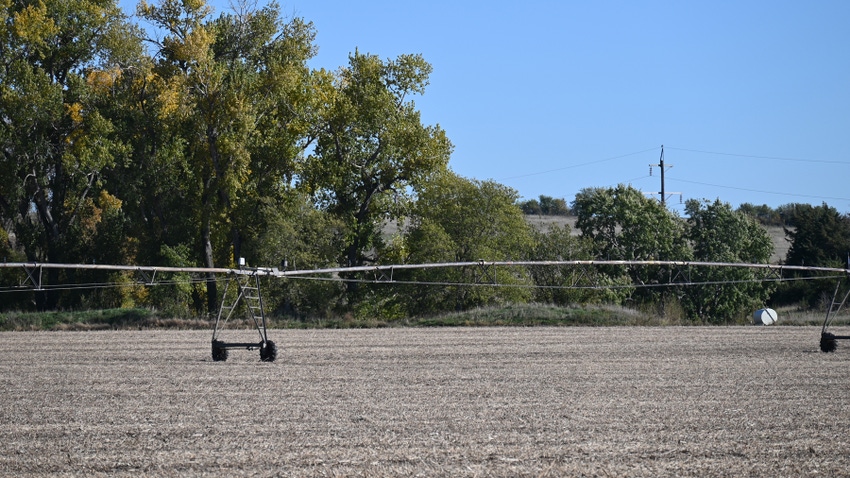
Irrigators may think that late fall and winter are a time to relax, a time when you don’t have to worry about well pumps, sprinkler nozzles, flowmeter data and pivot tires. Think again.
Steps to improve your center pivot’s water application efficiency and uniformity need to begin in the off-season. Getting pivots ready in the fall and winter for the irrigation season next spring will help reduce breakdowns and improve operations of your sprinkler systems.
Steve Melvin, University of Nebraska Extension irrigation specialist, says accomplishing uniform water application along the length of the pivot is your main objective. He and other University of Nebraska-Lincoln irrigation experts offer several suggestions to help irrigators do just that.
Here are a few of their top irrigation prep tips:
Kick the tires. Check each tower for tire pressure and tire condition. Make sure there are no breaks, cracks or wear.
Dive into the driveline. Check driveline knuckles for wear, drain water from gearboxes and top off with appropriate gear oil.
Top off the tower. Visually inspect the tower box and the alignment system, and then check pivot operation.
Inspect sprinklers. Once the system is up to pressure, Melvin says, it’s a good idea to check the system for leaks and operation of the sprinklers. “If you find missing sprinklers or those not working, refer to the sprinkler chart developed for the system to find the correct replacement,” he says.
Check for consistent application. If the pivot maneuvers over hilly ground, pressure regulators are needed for uniform water application. They need to be checked. Make sure no water is squirting from the side of the regulators. If so, the rubber bladder has failed, Melvin adds. If your system is approaching 10 years old, take extra time inspecting it because water uniformity will suffer if the sprinkler package is out of date.
Pause at the pump. According to Troy Ingram, now-retired Nebraska Extension educator, the irrigation pump is often overlooked in the preseason. “Make sure you start the dripper to get the line shaft bearings lubed,” he explains. “It needs one gallon of drip oil for every 100 feet of depth. Set the dripper for one drip every five seconds.”
Change the oil. Electric motors, the most common pumping plants across many regions, are relatively maintenance free, but they still need to be looked over. “It’s a good idea to change the oil in the unit every year,” Melvin says.
Look at wiring. Open the junction box and make sure the connectors are tight and have a good ground. Also check for frayed wires and any damage from rodents.
Perform engine maintenance. On internal combustion engines, change the oil and all filters.
For more information, email Melvin at [email protected].
McCabe is former editor of Nebraska Farmer. He writes from Lincoln, Neb.
Read more about:
IrrigationAbout the Author(s)
You May Also Like






